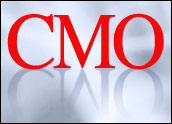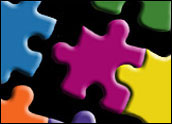
Companies seeking to steer highly qualified leads to their “closers” are faced today with a combination of competitive threats, information overload and hesitant buyer behavior requiring new strategies and tools to succeed. The never-ending economic pressure for sales organizations to increase productivity, while “doing more with less,” often results in organizational emphasis on segregating responsibilities between inside and outside sales teams, and yet empowering both teams with crucial sales intelligence.

Aberdeen research conducted in October and November 2009 of 476 corporate sales teams has provided extensive data that yielded actionable recommendations published in the December 2009 benchmark report, “Inside Sales Enablement: ‘Let Them Drink Coffee!'” Analysis of 167 end-user organizations currently deploying Hoover’s, as a sales intelligence tool in support of their inside sales teams, shows that these sales practitioners outperform other companies in both performance and the adoption of Best-in-Class practices, which are defined in this article.
Deconstructing Best-in-Class Inside Sales Deployments
The end-users researched for the inside sales enablement data set provided extensive insight into both their current and year-over-year performance, as well as how they respond to business pressures by deploying various capabilities and enablers.
As illustrated in Figure 1, Hoover’s customers have outperformed those that do not use their service, in terms of the percent of companies improving their year-over-year sales metrics, by an average of 25 percent.
Best-in-Class Sales Intelligence Methodologies
In Aberdeen’s research methodology, the top-performing companies are contrasted with other organizations primarily in terms of the capabilities and enablers used to support inside sales success. By analyzing the differentials between these audience groups, conclusions are drawn regarding how under-performing sales teams should alter their practices and technology deployments to better mimic the results of the Best-in-Class.
With the publication of the Aberdeen benchmark study, “Sales Intelligence: Preparing for Smarter Selling” in February 2010, the opportunity to further explore the specific niche of Sales Intelligence, which was one of multiple technologies explored in the Inside Sales study, allows us to dig more deeply into a technology enabler that was deployed 3.4 times more frequently by Best-in-Class sales forces, when compared to Laggards. In fact, findings from the Sales Intelligence benchmark indicate that 51 percent of top-performing organizations represented in this data set indicated sales intelligence is a high-priority deployment. Moreover, among the 528 total survey respondents in this research, 92 percent (486 companies) utilize externally provided sales intelligence content to support these sales efforts. These users saw an average of 46 percent of their sales reps currently achieving quota, compared to only 26 percent for companies not deploying external sales intelligence solutions. An overview of job functions that actively utilize sales intelligence tools is provided in Table 1.
Table 1: Most Frequent Users of Sales Intelligence
DepartmentPercent Using Sales IntelligenceSales91%Marketing68%Executive Management37%Market Research28%Competitive Intelligence27%Operations22%Customer Service and Support13%Public Relations10%
While the traditional utilization by sales and marketing staff are predictably high, it should be noted that a number of other departments within end-user organizations use sales intelligence in double-digit percentages, and some, such as executive management and operations, who are not consistently involved in market- or customer-facing activities but nevertheless derive value from direct access to this content.
In fact, research among over 1,000 companies collected for the pending 2010 Aberdeen Business Review reveals high-growth companies supporting customers with Customer Relationship Management (CRM) tools 20 percent more often than no-growth companies, validating the importance of this overall family of technology solutions.
In Conclusion
The December 2009 Benchmark Report “Inside Sales Enablement: ‘Let Them Drink Coffee!'” provides companies with a roadmap for leveraging the tools and methodologies for driving increased revenue through inside sales, and to mimic the relatively strong performance of Hoover’s customers.
Not only does the study outline steps to address the short-term need to enhance the sales pipeline, but it also provides long-term value to the field sales organization via career advancement between the teams. Further, the report presents specific recommendations for defining measurable goals and metrics around inside sales management, based on the performance of Best-in-Class companies.
Peter Ostrow is research director of sales effectiveness at the Aberdeen Group.


















































